Furs of Heraldry
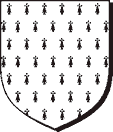
Ermine
Ermine is represented by a white field with black spots. It is the fur most commonly used in heraldry, and the spots represent the tails of this small animal, sewn to the white fur for enrichment. This is a regal fur, since ermine has long been associated with the crowns and robes of royal and noble persons. It symbolizes valor, justice and dignity.
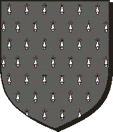
Ermines
Ermines or counter ermine, which is the French translation, is a fur resembling Ermine but with the colors reversed. Thus, in a black field with white spots that inversely represent the fur, the white spots represent the tails of this small animal, sewn together against black fur for contrast. Like ermine, it symbolizes valor, justice and dignity.
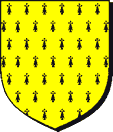
Erminois
Erminois is the reverse of Pean and both resemble Ermine only the colors are changed. Black spots represent the tails of this small animal, sewn together against a gold field for contrast. It symbolizes valor, justice and dignity.
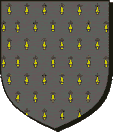
Pean
Pean resembles Ermine only the colors are changed. Gold spots represent the tails of this small animal, sewn together against a black field for contrast. The name was derived from the old French “pannes” which was a word for square pieces of fur of different color sewn together. It symbolizes valor, justice and dignity.
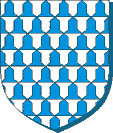
Vair
This bell-shaped pattern represents the fur of an animal like a weasel called a ver or a vair, from the Latin word varus, that had to be imported from Russia and was often used for lining the cloaks of rich nobles. Vair was a symbol of great wealth. Unless otherwise stated, it is always colored blue and white and it is drawn in a sharp bell shape stacked in tiers on a shield. If there are more than four rows, it is called menu-vair by the French heralds, from which the medieval word minever is derived. This is often borne by Flemish families. When there are more than four rows the term gros vair is used. Counter vair describes alternating tiers of the pattern right side up and then inverted, and vair en pointe is slightly different again. The term vairy is often used when describing a definite tincture.
See Also
- History of Heraldry
- Colors of Heraldry
- Ordinaries of Heraldry
- Elements of Family Crests and Coats of Arms
- Heraldry and Genealogy
References
- ^ Swyrich, Archive materials